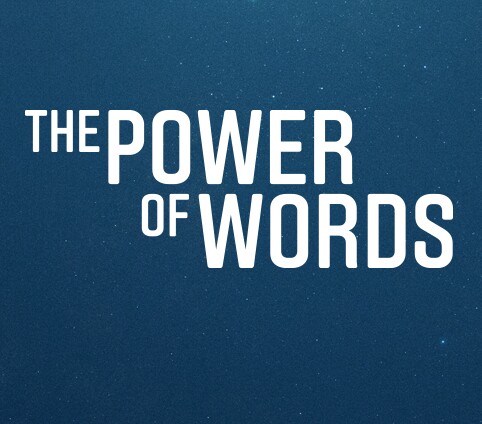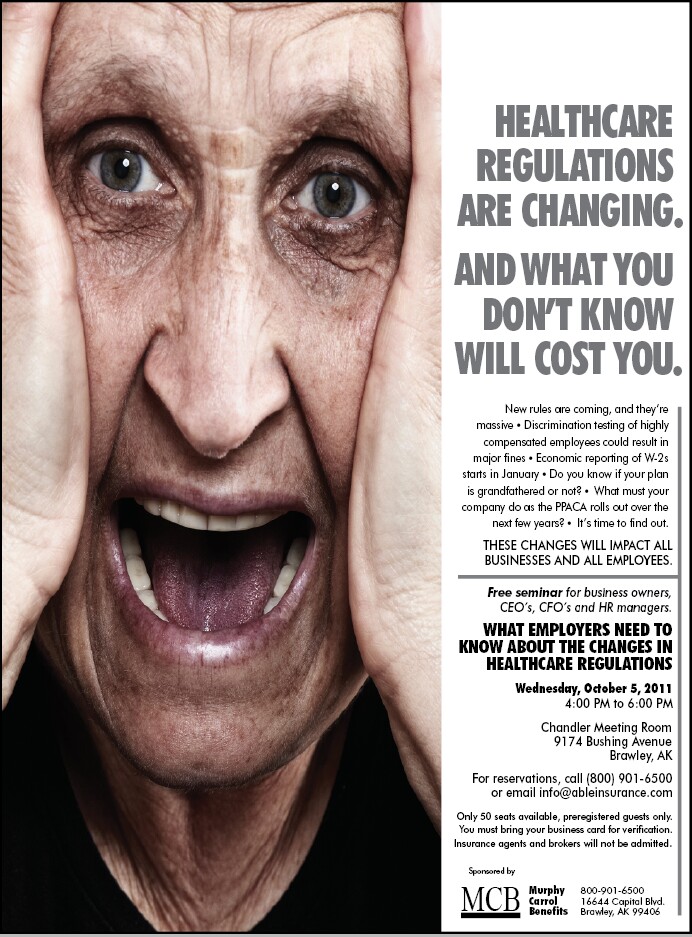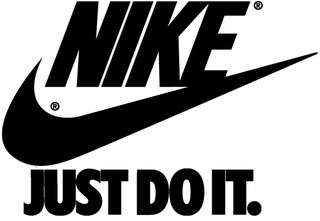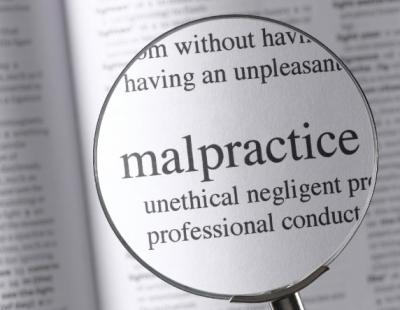 This is not a post about what headlines work better than others, or what power words you need to use, or how many syllables in the subject line of an email creates more interest. Rather this post has to do with something that every company needs to revisit since there will LOTS of marketing dollars put into play for 2016. Specifically, this is about the need to change the words that your company may be using, in some cases for far, far too long, in order to change how the company wants to be seen by their customers.
This is not a post about what headlines work better than others, or what power words you need to use, or how many syllables in the subject line of an email creates more interest. Rather this post has to do with something that every company needs to revisit since there will LOTS of marketing dollars put into play for 2016. Specifically, this is about the need to change the words that your company may be using, in some cases for far, far too long, in order to change how the company wants to be seen by their customers.
You’re probably saying “Yeah, yeah, yeah. I’ve heard that before. What else do you have?” Well here’s the deal: so many marketing folks are hung up on using words and saying things that are either “ways we describe our product” or are industry-speak that they sound un-interesting, un-inviting and more times than not, just like their competitors…which isn’t a good place to be. In turn, you’re valuable marketing dollars are wasted.
Over the course of my business career, I’ve been really fortunate to have worked with a number of really good copywriters. If you’ve ever spent any time in a marketing or advertising agency, you know just how critically important it is to have fantastic copywriters who know how to craft messaging so that in addition to being imaginative, original and fresh, the copy is so interesting that people want to buy the product. Unfortunately, and we all know this to be the case, many companies waste budgetary dollars on trying to convey an idea, a value proposition, or a reason for buying, with below par messaging that the prospective customer won’t even give second thought to. I can’t tell you how many times my wife and I have seen an ad or commercial where we’ve looked an one another and said “What the heck was that?” You have as well…I know you have.
And let’s not forget about online…like websites for example. Visiting websites with bad copywriting can be cringe-worthy as well as just plain boring! Product stories without a conclusion, meaningless purpose statements and yawning lists of statistics are a few other reasons prospects will click out of a poorly-written website. What a waste of money from the creation of the idea to the production to the media cost, right?
Well here’s something I learned over my 30+ years helping companies…from Fortune 100 to mom-pop’s alike… copy is not valued, and I mean really good copy, as it should be. It’s primarily because of two reasons: First, people are becoming more and more visual in today’s world and second, Mar-com folks have done so much writing that they’ve devalued copy in favor of other advertising or marketing messaging components such as accompanying visuals, click-throughs, QR-codes, etc.
So as you take another look at your marketing materials, and I would suggest all of your marketing materials, here are 5 simple things to have your messaging be acted upon:
The big finish: You may have already seen this video. It’s been recreated in a number of different languages around the world and speaks to the connecting point between a blind beggar and those who pass him by. I find inspiration every time I see the video and think you may find the same as it serves to illustrate the power that your choice of words can have in marketing your products, your services and your business.
####
Rolf Gutknecht is vice president, director of account services for LA ads. To discuss your thoughts with Rolf on this blog or any marketing matters, email via this link, or visit www.LAadsMarketing.com. You can also connect with Rolf on LinkedIn.
 Over the years, there’s one TV show that I make a point of watching and it’s “The Voice.” It has nothing to do with me fashioning myself as a singer and secretly wishing I was up there performing. In fact, I’m not a good singer at all. When our family goes to our annual vacation spot and the karaoke machine comes out, and I do my couple of songs, people just wince at how bad I am. Not to put too fine a point on it but when I was a kid, I was asked to leave (read: kicked out) of the kid’s church choir. Yeah, I’m that bad.
Over the years, there’s one TV show that I make a point of watching and it’s “The Voice.” It has nothing to do with me fashioning myself as a singer and secretly wishing I was up there performing. In fact, I’m not a good singer at all. When our family goes to our annual vacation spot and the karaoke machine comes out, and I do my couple of songs, people just wince at how bad I am. Not to put too fine a point on it but when I was a kid, I was asked to leave (read: kicked out) of the kid’s church choir. Yeah, I’m that bad.
Anyway, as I was watching the show last week, I started wondering why I had come to like the show as I have. Was it the way that show was setup – from blind audition to knock-out rounds, or was it that the judges could steal a singer that was dropped by another coach, or was it the celebrity coaches, or the singers themselves, or something else. And in doing so, out of the blue it occurred to me that there’s a few things that as marketers we could all learn and begin to apply to our individual marketing activities.
So what lessons are to be learned in order to connect with your audience:
While I can’t tell you who will win this season’s competition, I can tell you that the singers who have strategically given thought to the songs that they should sing and how they should perform those songs, will likely be the last ones standing. They understand that in order for people to buy into who they are and what they can become, they need to connect with the coaches and audiences in ways more powerful and moving than those they’re competing against. WOWing them is a must.
Because at the end of the day, what you tell prospective customers has to fascinate and captivate them – in a way that keeps them engaged and wanting to know more about you, which will lead to increased sales and revenue. As advertising legend, Bill Bernbach, said: “The truth isn’t the truth until people believe you, and they can’t believe you if they don’t know what you’re saying, and they can’t know what you’re saying if they don’t listen to you, and they won’t listen to you if you’re not interesting, and you won’t be interesting until you say and do things imaginatively, originally, freshly.” (NOTE: Now read it again but this time insert the name of your company every time you come to the words “you.”)
Those who always wish to sing will find a song.
####
Rolf Gutknecht is vice president, director of account services for LA ads. To discuss your thoughts with Rolf on this blog or any marketing matters, email via this link, or visit www.LAadsMarketing.com. You can also connect with Rolf on LinkedIn.
 I think we would all agree that having hope in one’s life, personal or business, matters a lot. Without hope (or dreams) whatever the positive outcome is that you’re looking to achieve, there is nothing to plan or look forward to and therefore no reason to put forth an effort. So while hope is important, basing the success of your marketing efforts on hope, like in “Well, we’re going to try this out and hope for the best,” is probably not something you want to bet your job or the sustainability of the company on.
I think we would all agree that having hope in one’s life, personal or business, matters a lot. Without hope (or dreams) whatever the positive outcome is that you’re looking to achieve, there is nothing to plan or look forward to and therefore no reason to put forth an effort. So while hope is important, basing the success of your marketing efforts on hope, like in “Well, we’re going to try this out and hope for the best,” is probably not something you want to bet your job or the sustainability of the company on.
You see, while hope may fill your heart… in marketing, Hope is not a Strategy. It never has been and it won’t be in this growing and increasingly competitive marketplace. Hoping people will register for a loyalty program or hoping the 5000 direct mail pieces you sent out will generate some leads or hoping that word-of-mouth on the new product introduction will open up some doors is all nice but without strategic thinking coupled with creativity (in the delivery of the message and how it’s delivered) your hope is nothing but a pipe-dream. In short, if there is no marketing strategy to match the business goals all you are doing is relying on luck to drive the business. In football, they call this the “Hail Mary”!
Speaking with the number of Marketing Directors that I have, you’d be surprised at how many of them and their teams use the word ”hope” to describe their marketing efforts. The reasons most of these folks live on hope has as much to do with human nature as anything else. Most people prefer the path of least resistance – the easiest track. You see, having a grasp of what your current customers and prospects are looking for and how you fit that need requires an understanding that takes work and resources. Oh, and let’s not forget that if you look too close, you might uncover some truths that you might not want to know existed. And rarely does one budget time or money for testing to learn what will have the best chance of success. For the “hope group,” it seems it’s easier to just create the marketing program and run with it rather than invest the resources and thinking to at least have some confidence in the outcome.
Here are a few things that “Hope Marketing” does and doesn’t do…
…Built around tactics and not strategy:
Hope Marketing people focus on the newest and sexiest marketing tactic du jour without any appreciation for how it fits in an overall marketing strategy. I’ve also seen entire marketing plans that consist of nothing but a series of tactics strung together one after the next without an over-arching marketing strategy. It’s easy to start with the “how” but if you haven’t identified the “what,” you may find yourself spending a lot of time executing tactics that don’t take you where you want to go and in so doing, you’ll be wasting time, resources and losing out on sales-producing opportunities.
…Based on an “insight-out” view of the world and not an “outside-in”:
Inside-Out thinking means the company is less sensitive to how the customer is interfacing with the market. Hope Marketing has slipped into thinking it’s “all about us and what we sell.” Inside-Out companies are surprised by poor sales results. They don’t feel threatened when a new competitor enters the market. They’re out of touch with what value they really bring – or don’t bring – to their customers. In short, their Hope Marketing mindset is “Here are our products and services and this is how we help you.” The problem with this approach is that it relies on your customers having to work to find a place for your solutions in their lives. Alternatively, “Outside-In” focuses on the customers’ point-of-view. These companies stand in the customer’s shoes and view everything the company does through the customer’s eyes. They depend on marketing to increase the conversation they have with their customers which in turn allows them to seize on business-building opportunities. They ask their customers what their upcoming needs are and then figure out how to give it to them. These companies don’t wait around for change to happen but rather they create change by seeing their world through their customers’ eyes, allowing them to more quickly meet the customers’ needs.
…Not really understanding who your customer is:
It’s safe to say that it’s probably been a while since a Hope Marketer has actually taken a close look at who they should be reaching/their customer, to produce sales. When was the last time a customer profile was established? What are the best channels nowadays to reach these people? When was the last time the company spent real, quality time doing research – surveys, interviews or even focus groups.
…Not clearly knowing what customers or prospects think of you:
On the subject of research, there’s no excuse for not doing it. Yes, I know that budgets are tight, but if you’re spending money reaching an audience that may not think of you as they did in the past, then the money spent Hope Marketing is money wasted. Hope Marketing believes that nothing much has changed and if it has, it’s not affecting the company’s sales/preference/etc. Maybe…and maybe not. Doing research online or on social media to see what customers or people are saying about you doesn’t take soooo much effort. Sending out a survey to current customers on a variety of different subjects isn’t an overwhelming project. You might not love what you hear but you’ll be better knowing it than guessing why marketing activities are not succeeding.
…Not understanding what makes your company and what it offers unique:
It’s not unusual to hear in organizations that engage in Hope Marketing differing answers to questions about what defines them or makes them unique in the marketplace. As a result, the marketing reflects that they’re trying to be all things to all people. At closer look you see that messaging is different from one marketing channel and marketing initiative to the next. “We do it all” is more or less the message but in doing so, no real value proposition is ever delivered. Without a good USP you’re dead! If you can’t very quickly describe what makes you, your product, your service or your company truly special in the eyes of the customer, don’t expect your customer to do it for you. By default, they’ll just put you on the shelf called “commodity,” and there you’ll stay.
So, if you still want to hope for things to look forward to…great. I’m all with you. Hope for a better tomorrow; hope for a cure to Alzheimers; or hope for anything else that you can’t directly control. But please don’t hope your marketing programs work. If you don’t know or believe the marketing will succeed, you are not setting your efforts up for success. Time to stop crossing your fingers.
####
Rolf Gutknecht is vice president, director of account services for LA ads. To discuss your thoughts with Rolf on this blog or any marketing matters, email via this link, or visit www.LAadsMarketing.com. You can also connect with Rolf on LinkedIn.
I’ve been out of school for (mumble mumble) years but I still consider myself a student.

I’m constantly learning about marketing and new ways to engage prospective customers. The absolute best way to learn about marketing is to watch other people – your spouse, your kids, your friends – and pay attention when they react to an ad or a mailer or a referral. For instance, I watch my wife at night, when she’s sorting through the stack of mail, to see what she tears open and what she trashes without first opening it. I listen to my kids when they tell me about a cool new app or commercial they’ve seen. As long as I don’t influence them with my opinions coloring theirs, they teach me a lot.
The second best way to learn about marketing is to catch myself in the act of responding to someone else’s marketing efforts. I do it all the time.
Let’s say the mail has just arrived and I grab the newest magazines. As I sit at my desk, feet up, I occasionally find myself reading an ad without thinking – and then I stop for a second and wonder why. What caught my attention? What stopped me from turning the page? Was it a topic I was already interested in? Was it a surprising photo or clever headline? What exactly was the trigger? And then, did the ad actually make me interested in knowing more about its subject? Did it influence me to consider calling or clicking or writing down a note? All these are the questions I ask myself only after I have been caught up in the ad – not before, or the “data” is invalid.
The same goes for when I mindlessly watch TV and catch myself actually focused on a commercial. Usually, commercials are just background noise. But then, something occasionally pulls me in and when I notice that I’ve been hooked, I stop to analyze what just happened. OK, sure, I’m always attracted by a sexy model, but hardly ever enough to really listen to the sales pitch. Yet, every once in a while a commercial sinks in without my intentionally intending for it to do so. That’s when I go from being a viewer to being a student and thinking about it analytically. I make a mental note of what happened…what hooked me and what drew me in. On the occasions in which I actually find myself seeking out the product afterward, I again rewind to learn what made me react the way the advertiser wanted me to.
Often, the answer isn’t as simple as how effective the ad or commercial or website was. Often, it’s a combination of things, including some desire or disposition I had already brought to the party; perhaps having seen other ads or commercials for the same or similar thing before but now, I suddenly noticed it; something other people have said about the product or brand recently that gave the ad new context; some news or article or review I may have read about it; and most potently, an immediate need that was answered by the ad or commercial or web page.
Whatever the influencers, this I know: I wouldn’t have been moved to act, having just seen the ad, without having seen it to begin with. Woody Allen has said that 80 percent of success is just showing up! So you gotta show up. I also know that clever creative isn’t the end-all, but I more regularly notice ads, billboards, direct mail, radio spots and TV commercials that have some imagination and freshness – on top of a strong selling message, and I most typically ignore anything and everything that seems old or familiar. And I’ve learned, and continue to learn, so much more by paying attention to my own unintentional behaviors, as I learn by watching those around me.
I encourage you to be your own best marketing teacher in the same way. Every time you buy a new brand of paper towel, or call a new plumber, or visit a new doctor, or make an online purchase, stop, rewind and consider all the factors that drove you to that specific buying decision. Every time you inadvertently find yourself paying attention to an ad or commercial or recall a billboard you passed, stop, rewind and reflect on what was it that grabbed you and pulled you in. Once you’ve gone through the day’s mail, notice which unsolicited mail you didn’t throw out and critically think about why.
Then take what you’re learning and measure that against the marketing your firm is doing.
There are a ton of books on marketing and lots of marketing theory classes at the local colleges, but you can acquire a great deal of knowledge on your own by simply watching yourself and others around you reacting in the real world…just like your prospective customers do every day.
####
Rolf Gutknecht is vice president, director of account services for LA ads. To discuss your thoughts with Rolf on this blog or any marketing matters, email via this link, or visit www.LAadsMarketing.com. You can also connect with Rolf on LinkedIn.
 I met a woman at social event last weekend and turns out she’s the president of a well-known company here in Southern California. During our conversation, she said that right now, the company — and she specifically called out her Marketing Department – is probably not doing all that it could to stay ahead of the curve. We talked about all the different things that “staying ahead of the curve” might mean to an organization, from keeping the company positioned as a leader to keeping one’s eyes open for change before it happens and before it’s too late to implement innovations. In short, we agreed that getting ahead of the curve provided three primary benefits: it would take advantage of opportunities that otherwise might be missed; it would, as much as possible, stop calamities from happening; and it would allow the company to be better prepared for the future. I can’t imagine that any decision maker or Marketing Department, especially in this new world of business, wants to be seen as a victim of events, caught unaware and therefore scrambling from one initiative to another. Right?
I met a woman at social event last weekend and turns out she’s the president of a well-known company here in Southern California. During our conversation, she said that right now, the company — and she specifically called out her Marketing Department – is probably not doing all that it could to stay ahead of the curve. We talked about all the different things that “staying ahead of the curve” might mean to an organization, from keeping the company positioned as a leader to keeping one’s eyes open for change before it happens and before it’s too late to implement innovations. In short, we agreed that getting ahead of the curve provided three primary benefits: it would take advantage of opportunities that otherwise might be missed; it would, as much as possible, stop calamities from happening; and it would allow the company to be better prepared for the future. I can’t imagine that any decision maker or Marketing Department, especially in this new world of business, wants to be seen as a victim of events, caught unaware and therefore scrambling from one initiative to another. Right?
Unfortunately, too many companies wait too long to begin the process of change and do so only when the writing is on the wall. Alternatively, the really successful companies, the one who people see as operating from a position of strength, change before they must. There is no denying that high performing companies sense the need for market changes early, and act accordingly.
So then, what are some things that a Marketing Department could do to stay ahead of the curve and in doing so give the organization a leg up from others.
Quitting Not Allowed
I’ve seen this on more than one occasion, and the successful companies know this to be the case, which is not to quit when everybody else does. That’s how you go from successful to crazy successful, and that’s how you dominate your industry no matter what it is. You develop or take on a great product that’s different, or you take an idea further. Dominate by putting out one idea after another after another… Dominate by not quitting. Dominate by trying, failing, trying again. Take your good ideas and make them better, take them further, show everybody how it’s done… get ahead the curve and stay well out ahead of the curve.
Don’t follow Others
In business, you always want to be ahead. Ahead of the competition…ahead of the trends…ahead of creative ideas. That said, staying ahead of the competition doesn’t always mean you need to worry about what they’re doing. Instead it’s better to do things to move your own business ahead rather than engaging your competitors in any sort of fight. It’s critical to know your competition, but don’t follow their every move or duplicate everything they try. Trust your instincts. Be original. Be different. Be creative. Do your own research, try new strategies and new product or service offerings that you believe in. While studying competitors can be shortcut to learning what works, it can also be a waste of time. At the same time, what’s working for you today will probably be imitated by your competitors tomorrow so it’s critical that you continue to innovate, invent, think differently, and stay ahead of the curve, including your own.
Let’s be Partners
Consider forming a strategic partnership with a noncompetitive business to grow market share and visibility. Brands are judged by the partners they keep so innovative partnerships can make brands seem cooler, more modern, more distinctive, more interesting, and more noteworthy. Innovative partnerships serve several strategic purposes such as enhancing the images of each, combining resources (financial and marketing) which result in synergistically higher levels of brand awareness for both. Not only will you have access to a completely new “Rolodex” of buyers, but you can share things like marketing, advertising, product development, sales, and branding.
Look Outward
Stay ahead of the curve by seeing what companies outside your industry are doing; understand how that idea or model might apply in your industry and be the first to apply it. Look internationally as well. How many times have you read about an interesting product that was launched in another country? Lots of times, right? In short, be curious and ask yourself why certain companies are now doing what they’re doing. Maybe they’re seeing something that you can use for your own business. And let’s not forget about just keeping your ears and eyes open as you go about your daily business. Don’t wear blinders as you live your life.
Flex with the Times
Flexible strategies based on customer need are more successful than sticking to a plan and holding course the whole way. Adapting plans to suit the market is an essential part of getting you closer to what really resonates with the consumer. That doesn’t mean that you’re so open-minded that your brains fall out, but rather that you at least consider what the market wants and how that could be something the organization should put resources against. If people want what you make in a different color, quantity or package, or provide your service in a different time frame or product bundle, the response can’t be “Oh, no. We just don’t do it that way.” Or, don’t be surprised when a competitor says “Sure. We can do that!” Also, stretch your mind to learn new skills and explore new approaches. Look for learning in post-project reviews, customer meetings, research and yes, even in mistakes. Think quickly and react decisively is critical to success of business, and its hallmark for staying ahead of the curve.
The course of business is rarely, rarely ever like a desert highway where things don’t change or if they do, you can see if from a mile away. Instead, the path of business in today’s new normal will continue to be more curvy than a mountain road. Instead of driving the curves, look to take a more aerial view. It’s amazing what you’ll be able to see down the road.
####
Rolf Gutknecht is vice president, director of account services for LA ads. To discuss your thoughts with Rolf on this blog or any marketing matters, email via this link, or visit www.LAadsMarketing.com. You can also connect with Rolf on LinkedIn.
Last week, we got a copy of a readership survey related to a trade ad we ran for a client. In the survey, the ad was among the top-ranked when it came to the most seen, most remembered and most read. But what was absolutely fascinating was how widely the readers’ reactions varied when asked their impressions of the ad. Their verbatim responses ranged from “Tacky” to “Perfect 10/10.” One reader commented “Poor taste, undignified, a true turn-off.” Another reader said “I clipped it out and it is on my refrigerator now. The whole idea of standing out in a crowd is extremely important to me if your business wants to be noticed.” Several said they were “shocked at first” but then got the message and completely agreed with the point.

In fact, I’ll say nearly 25% generally disapproved of the ad and maybe another 5% very strongly disliked it. On the other hand, the number of respondents who liked the ad and got its message was exceedingly high. And the turnout was successful.
What’s my point? Well I have three points to be precise.
The first is, we begin by acknowledging that we’re not right for everybody. In fact, we believe that as a marketing agency, we’re probably right for just a few percent of business operators, those who are strongly marketing-oriented and know that traditional advertising doesn’t get the attention of a disinterested public. The ad, therefore, is self-qualifying and will provoke a certain number of negative responses. That’s just fine, since again, we’re not right for everybody. Neither should you try to be all things to all people. Those that attempt such alchemy are doomed to blend in with all their competitors. Be different and proud of it. Not everybody is a Mac user. Not everybody likes Starbucks coffee. These hugely successful companies know who their market is and they don’t try to please everybody.
My second point is, it’s so damned tempting to knee-jerk to negative responses. One of my favorite quotes is “Everybody likes it until somebody doesn’t,” meaning the one or two negative voices often seem to drown out all the positive voices. It’s human nature to want universal approval. But it’s smart marketing to realize that no matter how hard you try, there will always – ALWAYS – be dissenters and not to let that veer you off course. (Just because someone doesn’t like it doesn’t mean they’re right or speak for the majority.) I’ve had clients who chose to kill a good campaign because they got a couple of negative calls and missed the tidal wave of silent support. People seldom call in to express their acclaim about an ad they like; they voice it at the sales counter. The trick is to start by knowing who you are and who you’re most right for (going back to my previous point), and reconcile that against the overall trend in audience feedback.
My third point is that when you commit to being really visible, you are choosing to declare your difference and necessarily you are stepping out on a limb. Strong, memorable, provocative advertising is risky stuff, not for the meek or conservative. One has to be willing to suffer a few arrows. Even to fall off that limb once in a while. But in a society that’s over-saturated with commercial messages, you have to stand apart to be noticed – that is unless your budget allows brute force bombardment. We don’t have that kind of money. Do you?
We’re very happy to have clients who like our unique direction, and must be satisfied that most of the industry is more conservative in approach than we are. Hey, Jaguar has to live with the fact that more people choose Hondas.
The fact that you’re reading our blogs, and have read this far in today’s post demonstrates that you’re within the segment who has the opportunity and vision to succeed against your more conservative competitors.
You just can’t do it with thin skin.
####
Rolf Gutknecht is vice president, director of account services for LA ads. To discuss your thoughts with Rolf on this blog or any marketing matters, email via this link, or visit www.LAadsMarketing.com. You can also connect with Rolf on LinkedIn.
 Oh, the wonder of beautifully crafted taglines. Those few strategically selected words that sum up everything your business stands for and what you want your target audience to know about you. They’ve made companies fortunes by telling people what makes them stand out in the sea of sameness. Consider FedEx’s brilliant “When it absolutely, positively has to be there overnight.” Nine simple words that tell FedEx buyers precisely what they’re going to get, while simultaneously informing all of its employees what their mission is. What if FedEx’s slogan was “We ship things!”? Would Nike be as successful if it allowed an executive committee to red-pencil “Just do it” into “When you need great shoes?” How would BMW’s vision change if “The Ultimate Driving Machine” became “Our cars are fun to drive!” My point is that these companies didn’t settle for weak platitudes or vague, generalized statements that could have applied to their competitors. Nope, they decided that they weren’t going to settle. Instead standing out and differentiating themselves was business-critical. Can the same be said for your company and its marketing? Do you have a themeline or slogan that makes you stand out? Is it unique and memorable? Or is it mediocre because somewhere down the line, people settled?
Oh, the wonder of beautifully crafted taglines. Those few strategically selected words that sum up everything your business stands for and what you want your target audience to know about you. They’ve made companies fortunes by telling people what makes them stand out in the sea of sameness. Consider FedEx’s brilliant “When it absolutely, positively has to be there overnight.” Nine simple words that tell FedEx buyers precisely what they’re going to get, while simultaneously informing all of its employees what their mission is. What if FedEx’s slogan was “We ship things!”? Would Nike be as successful if it allowed an executive committee to red-pencil “Just do it” into “When you need great shoes?” How would BMW’s vision change if “The Ultimate Driving Machine” became “Our cars are fun to drive!” My point is that these companies didn’t settle for weak platitudes or vague, generalized statements that could have applied to their competitors. Nope, they decided that they weren’t going to settle. Instead standing out and differentiating themselves was business-critical. Can the same be said for your company and its marketing? Do you have a themeline or slogan that makes you stand out? Is it unique and memorable? Or is it mediocre because somewhere down the line, people settled?
Imagine you owned a small piece of your buyers’ brains. And every time they thought about making a purchase where your product or service could be considered as an option, the brand or company name came to mind. For example if they were thirsty, they thought, “This Buds for you, “ or if they wanted a burger they thought, “Have it your way!” or if they when were tired and looking for a lodging for the night they remembered “We’ll leave the light on for ya!” That’s what the marketing slogans from Budweiser, Burger King and Motel 6 do, they help people remember a product and increase their propensity to buy. And that’s what a good marketing slogan can do for you. Unlike your company tagline or marketing message, your marketing slogan may change regularly or you may have more than one. For example American Express has: “Membership has its privileges.” And “ Don’t leave home without it.”
The taglines that work the hardest are not puns or rhymes, but ones that present many layers of meaning, where one layer can speak to the product while another speaks to value or even a brand a brand belief. It can manifest itself in any number of ways…online or offline. In ads and as a social media hashtag. On promotional products and product packaging. Most everywhere.
So what does a good tagline do? At its best, a good tagline conveys a singular value, loud and clear, on what a brand stands for. Remember, powerful words are powerful things. It also connects across all generations, geographies and markets, and becomes relevant for the consumer in his or her own personal way. And the right tagline doesn’t work for competitors because it’s only unique to your brand/company. Unfortunately, far, far, far too many taglines are generic and meaningless. In this time of technology disruption and increasing competition, clear positioning is valuable. Problems occur when the company and its messaging doesn’t have a focus, or the tagline could apply just as easily to other companies. In the marketplace, taglines are used to quickly communicate company differentiation. That said, taglines aren’t developed for customers alone. They’re also important for internal audiences as they can align an organization around a common cause and vision.
With that in mind, there are plenty of taglines out there that don’t work because they fail to connect. They’re easily overlooked, dismissed as “every day,” they lack originality or even mistaken for another brand. This usually happens when one of these mistakes happens:
Alternatively, good taglines have a number of hard-working qualities to them. They’re:
The process of developing a fresh, original and imaginative tagline is no easy task. From competitive research and brainstorming to paring down the list of options to more brainstorming, the process can take more time than you think …not to mention the back-and-forth given the stakeholders who are involved. And even then, the tagline may not be “all that.” That said, here’s how powerful a tagline can be – after 50+ years! Avis Rent-A-Car built its business with “We Try Harder” (which they finally put out to pasture just a few years ago). How the phrase came to be sounds like something out of Mad Men. The tagline was created in 1962 and actually came about in the response that Bill Bernbach, the co-founder of DDB, received from company management when asking why anyone ever rents a car from them. “We try harder” was the answer. Within a year, Avis turned a profit for the first time in over a decade and the rest is history.
####
Rolf Gutknecht is vice president, director of account services for LA ads. To discuss your thoughts with Rolf on this blog or any marketing matters, email via this link, or visit www.LAadsMarketing.com. You can also connect with Rolf on LinkedIn.
 “What do you mean they’re no longer a client? Are you kidding me? When did that happen? Why did they leave? I can’t believe it!” Have you heard (or said) these words in the past few months or so?
“What do you mean they’re no longer a client? Are you kidding me? When did that happen? Why did they leave? I can’t believe it!” Have you heard (or said) these words in the past few months or so?
Well, as we all know, clients come and clients go but the sad part about it is that more times than not it’s because we’ve lost track of them or taken them for granted.
Which brings me to the question that begs to be asked: “Why do customers leave?” Curiously, most business owners and managers have the exact wrong idea about why customers leave. Most people believe that customers leave because:
(Drum roll please)…Wrong!
According to an in-depth study by the research firm CRMGuru, the reasons customers give for taking their “business down the road” are:
As you can see, when it comes to keeping your existing customers, customer service is three times more important than price–and five times more important than functionality. Which obviously means that if you want to keep the customers you’ve got, you should think about reversing priorities and pay more attention to customer service and quality – and, consequently, less attention to functionality and price. I fully realize that this runs contrary to 90% of what most people think is important, probably because price and functionality can play a large role in new customer acquisition.
Yet, many marketing plans are so focused on customer acquisition that they largely ignore customer retention. Even a tiny change in customer retention can have a large effect on long-term profitability and growth. This shouldn’t be underestimated. The easiest way to grow your customers is not to lose them. In fact, I recently read that 96 percent of dissatisfied customers don’t complain. They just take their business to one of your competitors, and the unfortunate thing is that you’ll never know why. And what’s worse, while they may not tell you what’s wrong, they will certainly tell plenty of others!
Want to get an edge over your competitors? With a little attention, your business can be one of those which can negate customer churn and improve profitability. Here’s a list of the five strategies (only limited by space) you can use to improve customer retention.
Keep them on your radar screen
So many companies do an excellent job of making the initial sale, then start chasing other prospects and in the process forget about their current customer…ignore may be the case as well…or they just get complacent. Gaining a new customer only begins when someone makes that initial purchase decision because there’s this thing called “buyer’s remorse.” To make sure that future referrals and repeat business materialize from this customer, it’s important to make sure that your customers’ fears are put to rest, and that you demonstrate by your actions that you really care and that they’ve made the right decision to deal with you. This can be accomplished by putting a plan in place to communicate with them, and sell to them again and again, constantly proving that your company was the right choice.
Build engaging relationships
With CRM programs all the rage, coupled with Big Data and predictive analytics providing marketers with in depth customer insights, the key to engagement is through personalization. In fact, as consumers ourselves, we expect and demand that companies personalize messaging and offers so they’re relevant to our wants and needs. You can do this by providing clients with offers that are personalized to them. Send them offers and information/content that they’ll like at the right time based on when they might need the product. Do some A/B testing in order to see what catches the attention of your customers. And, even recommend products to them. Offers, timing and product recommendations all show that you know and care about your clients.
Share useful content/information
Customers buy from people. They buy based on trust. Building trust with new customers is the key to getting them to buy in the first place. And maintaining and strengthening that trust is the key to keeping your customer over the long term, improving customer retention. In today’s marketplace, it’s not enough to have a wonderful product or service, you also have to help educate your customers on how they can use your product or service better. Content must abide by three criteria: it must be expected, valuable and relevant.
Give Back
Going back to your own personal experience for a minute, what is your impression of a company that, out-of-blue, gives you something you could use….for no cost. Not as an incentive or ulterior motive to purchase or do something else, but rather “just because.” It probably left you feeling good about the company, maybe even made you happy. Using the element of surprise to your advantage is a good thing because people naturally remember when something surprised them in a good way. You see, winning customers over starts with winning their thanks on individual terms. And while technology allows you to offer up this surprise to whatever scale you want, the fact is people remember acts of kindness when it feels personal.
Provide Exemplary Customer Service
When it comes to retaining customers, nothing’s more important than hands-on customer service. So let’s address a few different ways that customer service plays itself out. Critical to this is making sure that interactions that you have with the customer are quality interactions. Think about it: when you’re the customer, you expect the company that you’re dealing with to be courteous, willing and helpful, right? Also, make sure you’re dealing in the communications mode that your customer prefers. Although the majority of people prefer email, some like receiving calls or connections through social media channels. On that note, being proactive, or anticipating what the customer might need or addressing problems before they happen is always better than the alternative. This could be as simple as calling and asking if everything is OK before the client calls you to say something is not. Or letting them know that the product they recently bought is being redesigned and will look different or is going to be sold in bulk versus single-product purchases. And lastly, there’s nothing like hearing from the customers themselves. Some sort of a feedback system, such as a survey or speaking directly with your loyal customers, shows them that you really care about their recent experience with your company and will help identify any issues to address.
Regardless of what you’re selling, your long-term profitability is largely dependent upon your ability to keep current customers, compared to acquiring new ones. While you must always try things to attract new customers to your business, don’t take for granted those who are already in your camp and are supporting your business. Don’t forget, every now and then, to “dance with dem dat brung ya.”
####
Rolf Gutknecht is vice president, director of account services for LA ads. To discuss your thoughts with Rolf on this blog or any marketing matters, email via this link, or visit www.LAadsMarketing.com. You can also connect with Rolf on LinkedIn.
 As a marketing firm that’s always looking to engage in new business relationships with interesting companies, we continue to have more than our share of new business meetings. These companies run the gamut from small to “you’ve heard of this company before” and while they’re sometimes far removed from one another in terms of sales and recognition, a surprising number of times there’s not that much of a difference in their approach to their marketing initiatives which, as my business partner puts it, “borders on marketing malpractice.”
As a marketing firm that’s always looking to engage in new business relationships with interesting companies, we continue to have more than our share of new business meetings. These companies run the gamut from small to “you’ve heard of this company before” and while they’re sometimes far removed from one another in terms of sales and recognition, a surprising number of times there’s not that much of a difference in their approach to their marketing initiatives which, as my business partner puts it, “borders on marketing malpractice.”
How am I defining “marketing malpractice?” Well, while it might take form in a few different ways, it’s primarily about a breach of duty that does harm when another course of action, as performed by a reasonable person, should have been taken. In short, it’s about negligence. While malpractice is commonly associated with the medical, financial and legal world, it could also be readily applied to the marketing world as well.
With that in mind, let’s look at 5 ways that companies and marketing leaders could become guilty of marketing malpractice:
Not having a full grasp of the marketplace
Too many companies assume that there is absolutely no need to substantiate their beliefs about the marketplace, about what their prospects want, about why their customers are buying, about what people think of their brand, about most anything having to do with those whom they want to purchase their products or services. Generally the thinking is that no one can know the marketplace as well as the company and the market will accept whatever you offer. Are you pretty darn confident on how your specific industry is changing and what is needed to get out in front of the competition? Understanding the marketplace as a whole will create the opportunities that bring with it the sales, visibility, prominence, trust, etc., that you might be looking for. And you get there by doing some research…the right way.
A lack of focus
The “We have to be here, there and everywhere” thinking is a sure way to squander the limited budget that you have. And who said that you need to be all over social media platforms like LinkedIn, YouTube, Facebook, Twitter, Google+, and Pinterest? Heck, you’ve got your product literature online, and your Web site has a blog and videos. Not to mention all the offline activities ranging from tradeshow activities to advertising to PR, etc. Why did you believe you need to be in ALL of these media locations in the first place, and, just as importantly, who is making sure that all of these activities work together?
Inconsistency or mixing of marketing messaging
When different aspects of your marketing messages don’t reinforce each other, the inconsistencies alienate prospects and current customers. Inconsistent marketing distorts clear expectations, makes potential customers unsure of the characteristics of your products and creates unhappy customers who don’t get what they expect. These inconsistencies affect businesses by reducing both initial sales to consumers as well as repeat sales from dissatisfied customers. Throwing stuff up against the wall to see what sticks is a clear path to wasting resources and confusing people/organizations that you want as customers.
Being just like the other guy
How many times have you read or seen something from one company that looked just like what one of their competitors has or is currently saying? For an example, go online and look at professional services firms and tell me why one is different from the other. The fact is that there is no relevancy to what you’re saying if you just keep repeating what others have said already. Your company/products/services only has value if you’re different and if you can find a way that you can take who you are, what you make, and what you offer and create a relationship with prospects and current customers that is instantly captivating. Striving for differentiation rather than being a “me-too” allows for the organization to seize on new sales-producing and revenue-generating opportunities. Otherwise, you’re just a lazy copycat…two words that don’t leave the minds of the customers and competitors anytime soon.
Confusing strategy with tactics
Maybe, just maybe, the most common marketing malpractice occurrence is not having one over-arching marketing strategy – and ensuring its implementation through all your tactics. Executing marketing tactics without having a well-developed integrated strategy is a recipe for disaster. It’s easy to start with the “how” but if you haven’t identified the “what,” you may find yourself spending a lot of time executing tactics that don’t take you where you want to go and in so doing, you’ll be wasting time, resources and losing out on sales-producing opportunities. What is needed is one single integrated strategy that looks across all delivery platforms whether online or offline, print, broadcast, or mobile. Your customers don’t have an online self and offline self and neither should you. Think holistically about all your marketing initiatives.
At the end of the day, both the short-term and quite possibly the long-term prospects of the company could be affected as a result of marketing malpractice. Whether done because one doesn’t know better or because of expediency, it happens and the organization will have to live with the results. So, while you won’t be brought into court (unless you did something very egregious), one question that a marketer has to ask oneself and answer honestly, is: “Have I breached my duty as the marketing leader for the organization so much so that it has caused harm to both short and long term sales, visibility, prominence, market share, and trust for the company?” Hopefully, the answer today and in the future will remain a resounding NO.
####
Rolf Gutknecht is vice president, director of account services for LA ads. To discuss your thoughts with Rolf on this blog or any marketing matters, email via this link, or visit www.LAadsMarketing.com. You can also connect with Rolf on LinkedIn.
 Over this past weekend, I went into a store that’s part of a 15-20 location chain, and upon entering, this place made sure that I understood that for them “It’s all About Exceeding Expectations!” Now as a line, it’s pretty pedestrian but it set the tone for what I was going to experience. And they were true to their word. But you see, it wasn’t just 5 words strung together. Instead this was, after speaking with the staff, their rallying cry for the first quarter of the year.
Over this past weekend, I went into a store that’s part of a 15-20 location chain, and upon entering, this place made sure that I understood that for them “It’s all About Exceeding Expectations!” Now as a line, it’s pretty pedestrian but it set the tone for what I was going to experience. And they were true to their word. But you see, it wasn’t just 5 words strung together. Instead this was, after speaking with the staff, their rallying cry for the first quarter of the year.
That got me thinking that not enough companies use rallying cries (or sometimes referred to as “battle cries”). After all, these rallying cries have been used for thousands of years to unite individuals into a collective identity and to emotionally charge them up before rushing forward to accomplish their mission. So let me ask, has your company instituted a rallying cry? And I don’t mean for a second a “mission statement,” which most companies have; because of group think, these mission statements lack originality, they’re as uninspiring as possible, and which 99.99% of employees couldn’t recite it to win a million dollars. Instead, what I mean is a short and catchy phrase that can inspire a company and fascinate your marketplace. A rallying cry will tell employees how to act and consumers what to expect.
When you institute a rallying cry, everyone knows what it means. Rallying cries are huge. They’re single themes that everyone connects to and rallies around. That theme ends up creating this “mini-vision” for individuals to focus on… a clear direction for the entire organization for a specified period of time which speaks to “this is what’s important to our organization right now!” And so this doesn’t come across as a theme line or slogan but rather an understandable call-to-action to employees and customers, one needs to define what the goals to be met will be. It can be your big goal for the year or your most important annual metric. Regardless, the rallying cry should be specific and measurable. This could take the form of something like “3x in 2y” (Tripling business in 2 years) or “500 in 2015” (500 new accounts in 2015) or “Quick Start 50” (making contact and setting presentation appointments with your Top 50 dream clients). You get the idea.
For some clients I’ve worked with, this rallying cry provides a reason for the organization to start working as a team rather than in siloed departments. There’s a tremendous power in this kind of focus as it helps the company achieve better results faster and gets them ready for the next team effort. It also keeps the people in the organization engaged because they know what their company’s goals are and how they fit in. Some companies have annual and quarterly and monthly rallying cries. I’m more of an annual/semi-annual guy.
To get started, here are a five elements to creating your own rallying cry:
Once the rallying cry is chosen, pledge eternal allegiance to it. The new rallying cry should be continually infused into sales meetings, customer presentations, press releases, collateral, the company website and all other marketing communications. And if appropriate and possible, its spirit, if not the actual words, should be communicated in your advertising activities. And then if or when the goal is achieved, it should be celebrated with the same enthusiasm as it was when first initiated as it’s important to show people that their hard work is much appreciated.
Think about this: If everyone in your company were to rally around a single inspiring theme, what kind of wonderful magic would be achieved? What kind of game-changing results could be achieved? A rallying cry is an amazing way to get people aligned. Whether your company’s goal is one that applies to all departments or relates to one specific department, a strong rallying cry can serve to unite the entire company to eagerly move toward the new destination created by that vision.
So, as the marketing champion within your organization, what better way to have people unite under an inspiring marketing message and create excitement throughout the ranks rather than with a rallying cry? “Onward and Upward!”…oh, I think that one has been used before.
####
Rolf Gutknecht is vice president, director of account services for LA ads. To discuss your thoughts with Rolf on this blog or any marketing matters, email via this link, or visit www.LAadsMarketing.com. You can also connect with Rolf on LinkedIn.